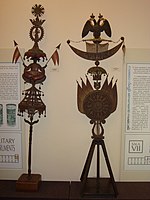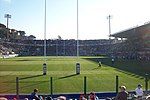Sacro Cuore di Maria

Minor Basilica of the Immaculate Heart of Mary (Immaculate Heart of Mary), is a titular church in Piazza Euclide, Rome. It was built by the architect Armando Brasini (1879–1965). Its construction began in 1923 with the design of a Greek cross inscribed in a circle with an articulated facade, and completed before 1936, the year in which it was made a parish church and granted to the Congregation of Missionary Sons of the Sacred Immaculate Heart of Mary, usually known as the Claretian Missionaries. A grand dome was planned, but never realized; a smaller drum was completed in 1951. Pope John XXIII elevated it to the rank of Minor Basilica in May 1959, and Pope Paul VI made it a titular church in February 1965, with Ángel Herrera Oria as the first titular. The present titular priest is Julius Riyadi Darmaatmadja S.J., appointed in 1994.
Excerpt from the Wikipedia article Sacro Cuore di Maria (License: CC BY-SA 3.0, Authors, Images).Sacro Cuore di Maria
Piazza Euclide, Rome Pinciano
Geographical coordinates (GPS) Address External links Nearby Places Show on map
Geographical coordinates (GPS)
| Latitude | Longitude |
|---|---|
| N 41.927046 ° | E 12.481202 ° |
Address
Basilica del Sacro Cuore Immacolato di Maria
Piazza Euclide
00197 Rome, Pinciano
Lazio, Italy
Open on Google Maps








